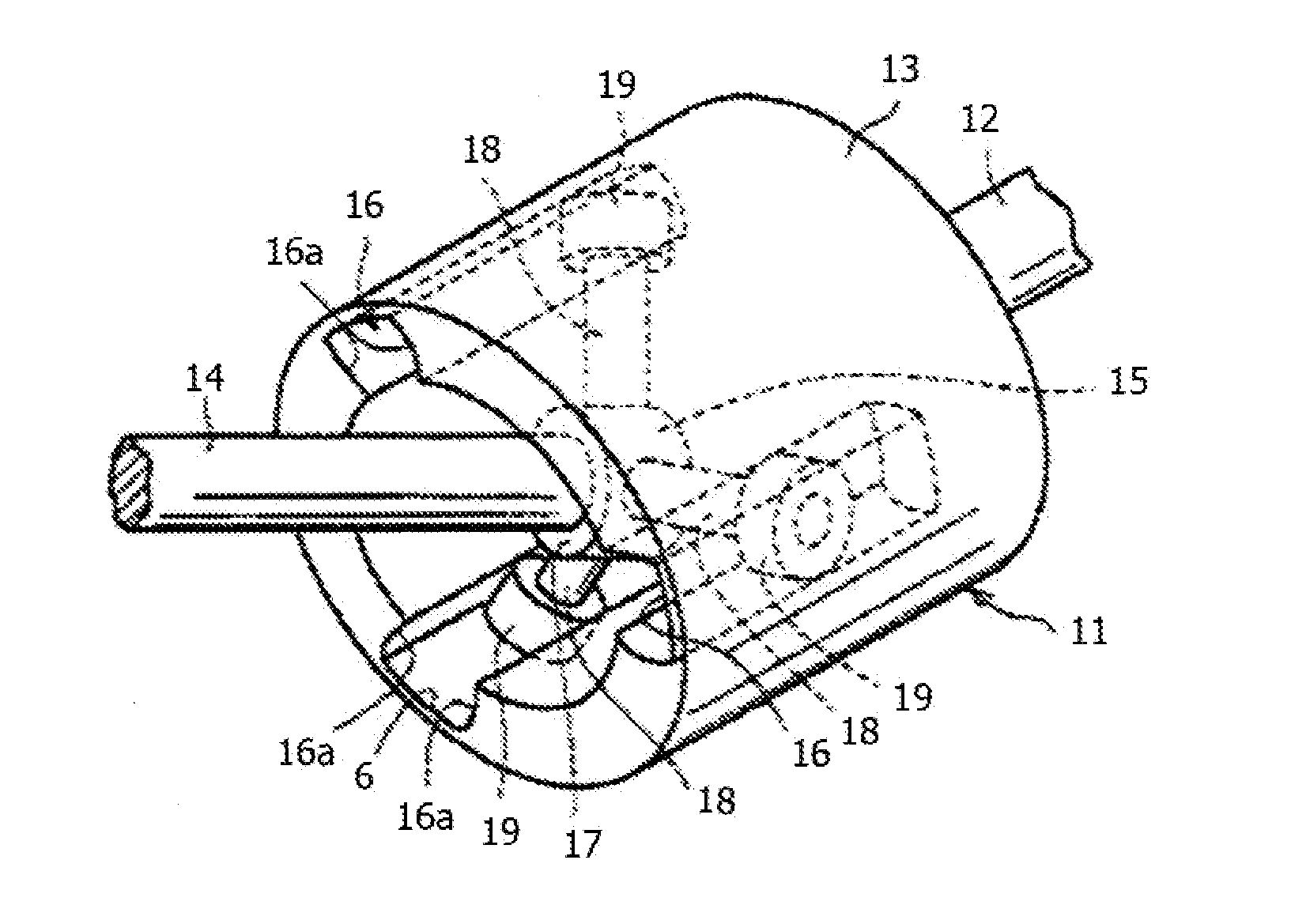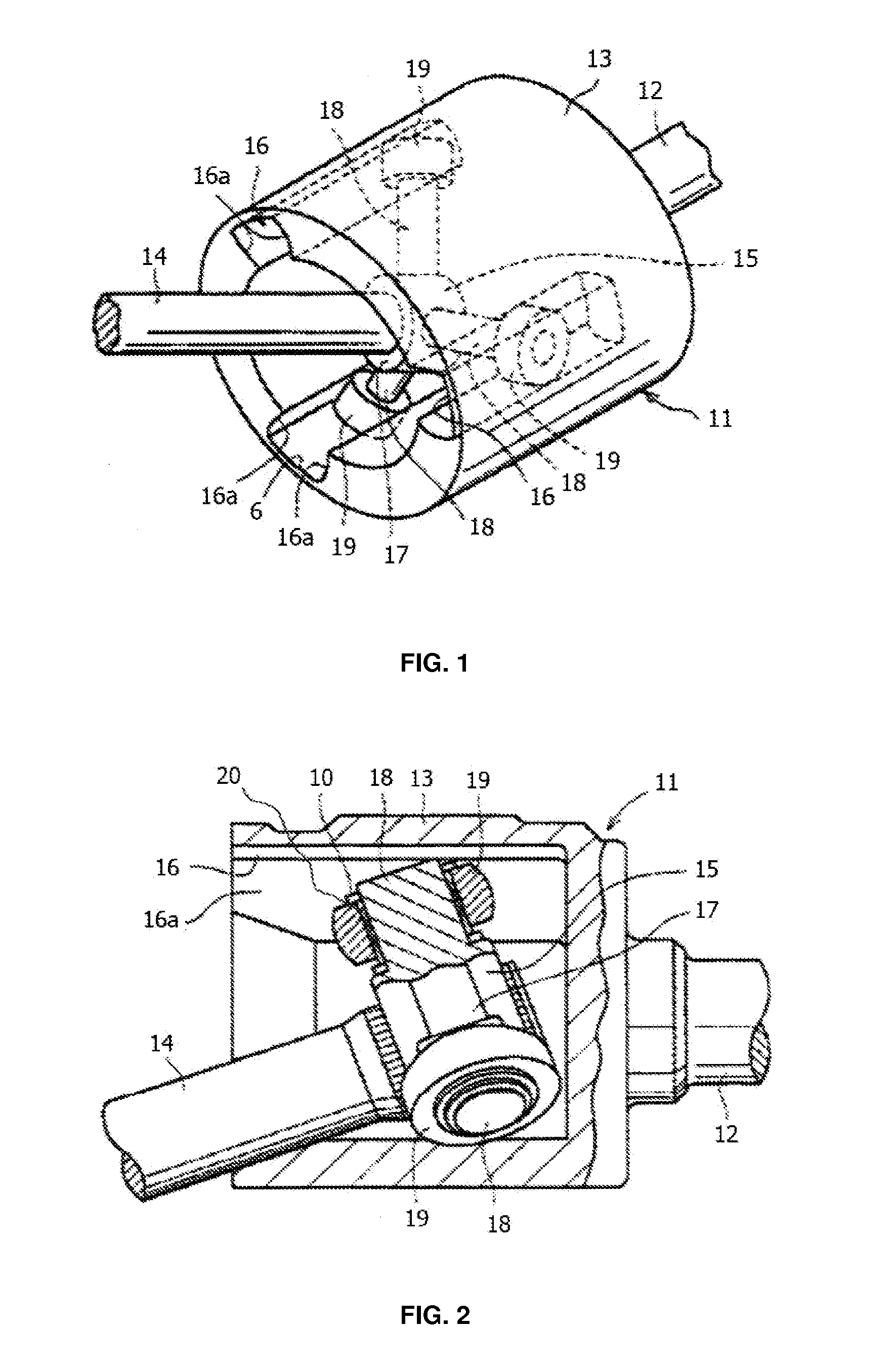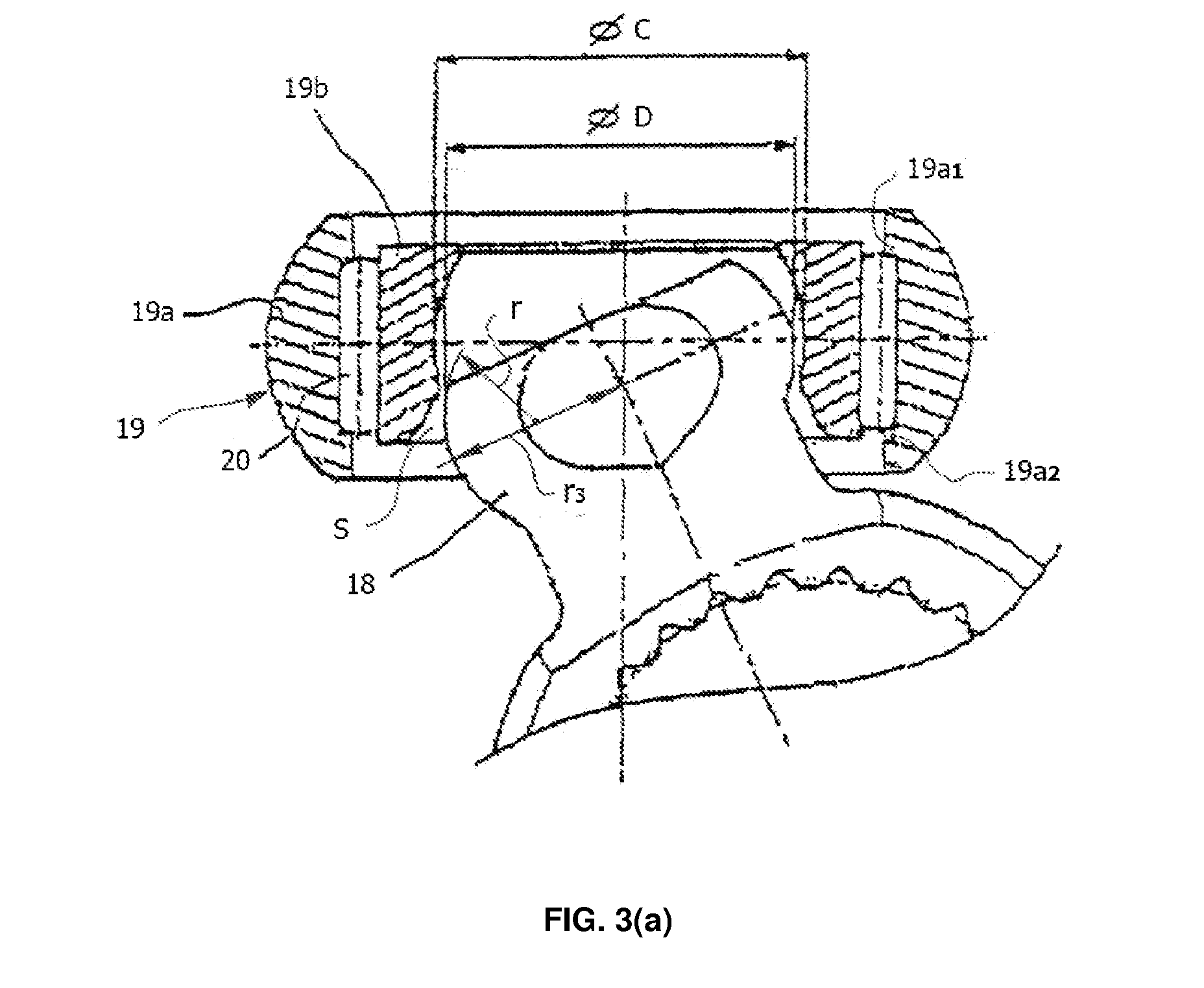Constant Velocity Joint of Tripod Type
a constant velocity joint and tripod technology, applied in the direction of yielding couplings, couplings, rotary machine parts, etc., can solve the problems of large manufacturing cost, relative large friction between the faces, and high manufacturing cost, and achieve strong and durable, reduce frictional spinning force, and simple structure
- Summary
- Abstract
- Description
- Claims
- Application Information
AI Technical Summary
Benefits of technology
Problems solved by technology
Method used
Image
Examples
second embodiment
[0072]FIG. 6 illustrates the invention in which each trunnion 6 has a pair of cylindrical protrusions 6a with a diameter φA. The two protrusions 6a are disposed in the X-X direction of receiving a load and respectively protruded along the axis normal to the axis of the trunnion 6 by a height H1. The two protrusions 6a together define a generally spherical end surface with a diameter φD. Each trunnion 6 includes a pair of flat surfaces 6b in the Z-Z direction of not receiving a load, respectively, in order to diminish the spin moment and make grease flow easily in axial and circumferential direction and for enhancing an initial lubrication of the joint.
[0073]With reference to FIG. 7, the third embodiment is described herein. This embodiment is similar to the first and second embodiments described above. The difference of this embodiment shown in FIG. 7 from the above embodiments is that the central portion (φA1) of the spherical surface of the cylindrical protrusion 6a protruded from...
fourth embodiment
[0074]With reference to FIG. 8, the fourth embodiment is described herein. This embodiment is also very similar to the above described embodiment as shown in FIG. 6. The difference of this embodiment from that shown in FIG. 6 is that the trunnion 6 has a cylindrical protrusion 6a in the X-X direction of receiving the load, however, the protrusion 6a having an elliptical shape which defines a longer diameter B2 and shorter diameter A2.
fifth embodiment
[0075]With reference to FIG. 9, the fifth embodiment is described herein. FIG. 9 shows that the inner roller 4 has a generally spherical inner face and has a tapered outer cylindrical face with a taper angle 0, and has two grooves 4b formed on the bottom portion and disposed in the X-X direction of receiving the load, in which the width “B” of each groove at the opening 4e1 is smaller than the width “A” at the bottom 4e2 of the groove. Moreover, the inner roller 4 has two recessed grooves 4c on the top portion and in the Z-Z direction of not receiving the load, in order to allow the distance OH between the grooves 4b to expand elastically by making the inner roller bent around the two recessed grooves 4c either by a force applied to the rims 4d of the inner roller on the top portion or by forcing to open the inner opening OH of the inner roller 4. This facilitates assembly of the trunnion into the inner roller as described above.
PUM
| Property | Measurement | Unit |
|---|---|---|
| velocity | aaaaa | aaaaa |
| angle | aaaaa | aaaaa |
| distance | aaaaa | aaaaa |
Abstract
Description
Claims
Application Information
 Login to View More
Login to View More - R&D
- Intellectual Property
- Life Sciences
- Materials
- Tech Scout
- Unparalleled Data Quality
- Higher Quality Content
- 60% Fewer Hallucinations
Browse by: Latest US Patents, China's latest patents, Technical Efficacy Thesaurus, Application Domain, Technology Topic, Popular Technical Reports.
© 2025 PatSnap. All rights reserved.Legal|Privacy policy|Modern Slavery Act Transparency Statement|Sitemap|About US| Contact US: help@patsnap.com



